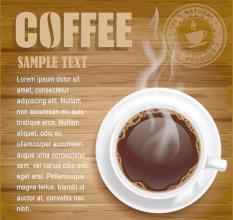Introduction to grinding scale of Kenyan coffee producing area characteristics and flavor description treatment method
Introduction to grinding scale of Kenyan coffee producing area characteristics and flavor description treatment method
After circling 6 concentric circles, the electronic claim will show that the amount of water is about 70-80 grams (including 31.8 grams of water used for steaming). If it exceeds 80 grams, the flow is too large, and you must practice the smallest flow and circle it. Use this thin water to slowly circle and disperse the powder layer formed by steaming, and all the powder is wet to the water, determining the direction of the taste. The first feeling of drinking coffee is that the taste is distributed to the whole mouth, and every taste bud can feel the coffee, which can improve the cleanliness and sweetness.) This stage of the flow requirements is the lowest, even if you break the flow does not affect the taste, as long as it can be wet to all the powder. If the filter paper is washed on the filter paper during the circle at this stage, the water on the filter paper will be absorbed by the powder layer, because when the fine water flows around, the water absorption rate of the powder layer is slow and the water in the powder layer is not saturated.
On the contrary, hand flushing is popular in China. The water is also injected at the central point, but the flood flows around 2-3 times, and the water in the powder layer is saturated. The large current has a great impact on the powder layer, and many people do not dare to go to the extreme edge, so they can only circle around the center point and the middle part of the filter cup wall. the large water flow will quickly push up the powder layer, and some of the steaming powder layer on the far side will be relatively dry relative to the central point, resulting in insufficient extraction. (taste trend: the first taste of drinking coffee is included in, and the coffee liquid flows directly down to the throat, resulting in a strong taste and easy to have raw and mixed smell.)
In Kenya, except for SL28, SL34, K7 and Ruirull11, the best varieties are SL28 and 34, which are not resistant to leaf rust but have vulgar berry flavor, so they are usually grown in high altitude areas, in which SL28 is drought-tolerant and SL34 is moisture-tolerant. The real top Kenyan coffee comes from these two varieties, while K7 has a general taste but is more resistant to diseases and insect pests, so it is grown in low altitude areas, while Ruirull11 has Robusta gene. Poor flavor is used for mass production of commercial beans. So, the delicious Kenyan AA I drink comes from the two varieties SL28 and 34, that is, there is no doubt that Kenya is also recognized by many people as boutique coffee, its flavor not only has the wild flavor of Africa, but also has the mellow and clean of American coffee, with obvious fruit aroma and ripe fruit acid. And the coffee-producing region of Nayeri in Kenya won fourth place in the 2010 SCAA "Coffee of the year" list with 89.22 points. I think Kenyan coffee is like the film "out of Africa". The film is worth watching, the coffee is worth drinking, and it is well-deserved to be able to go out of Africa to win the honor.

Important Notice :
前街咖啡 FrontStreet Coffee has moved to new addredd:
FrontStreet Coffee Address: 315,Donghua East Road,GuangZhou
Tel:020 38364473
- Prev

Can Arabica coffee beans be made by hand? introduction to the price characteristics of Arabica coffee beans
Arabica coffee beans can be made by hand? price characteristics of origin treatment method Bourbon "Bourbon" bourbon is an ancient and excellent variety juxtaposed with tin pickup, and some botanists believe that bourbon is an early variety of iron pickup after it was transplanted to Yemen. Bourbon is almost all round beans, beans are a little smaller than tin card, ripening later, but the yield is 30% more than tin card. It is suitable for planting at an altitude of 1200.
- Next

Introduction of Ethiopian Yega Xuefei G1 Coffee Bean Water washing and Solar Flavor description method
Ethiopian Yejashuefi G1 coffee bean washing sun flavor description method introduces that Yega Xuefei is a region in Ethiopia's Sidamo province, which is famous for its unique coffee flavor. The name Yegashafi is even bigger than that of Sidamo, the province where it is located. Recently, the domestic Yejia Xuefei can be said to be everywhere, more and more coffee lovers
Related
- Detailed explanation of Jadeite planting Land in Panamanian Jadeite Manor introduction to the grading system of Jadeite competitive bidding, Red bid, Green bid and Rose Summer
- Story of Coffee planting in Brenka region of Costa Rica Stonehenge Manor anaerobic heavy honey treatment of flavor mouth
- What's on the barrel of Blue Mountain Coffee beans?
- Can American coffee also pull flowers? How to use hot American style to pull out a good-looking pattern?
- Can you make a cold extract with coffee beans? What is the right proportion for cold-extracted coffee formula?
- Indonesian PWN Gold Mandrine Coffee Origin Features Flavor How to Chong? Mandolin coffee is American.
- A brief introduction to the flavor characteristics of Brazilian yellow bourbon coffee beans
- What is the effect of different water quality on the flavor of cold-extracted coffee? What kind of water is best for brewing coffee?
- Why do you think of Rose Summer whenever you mention Panamanian coffee?
- Introduction to the characteristics of authentic blue mountain coffee bean producing areas? What is the CIB Coffee Authority in Jamaica?

